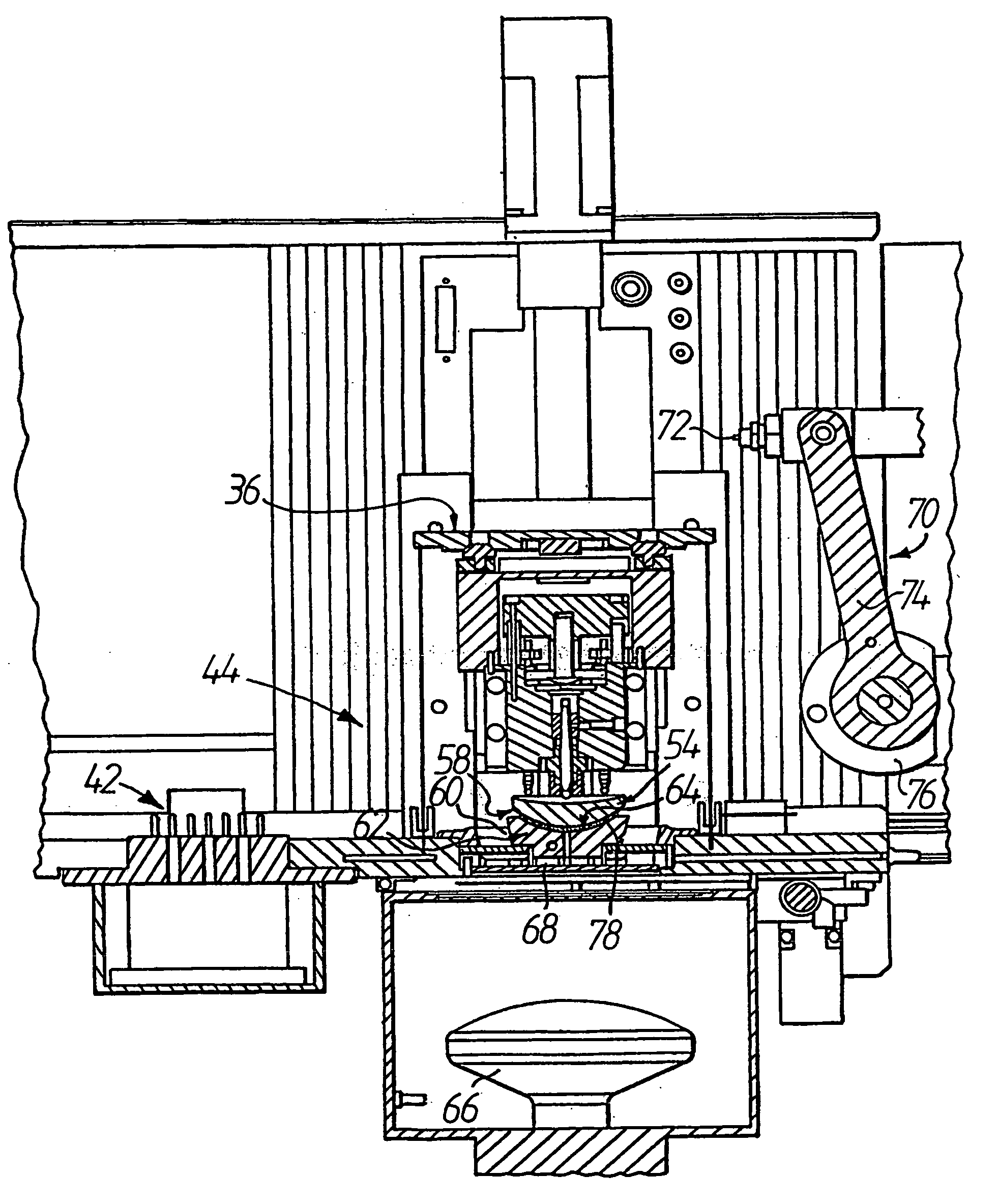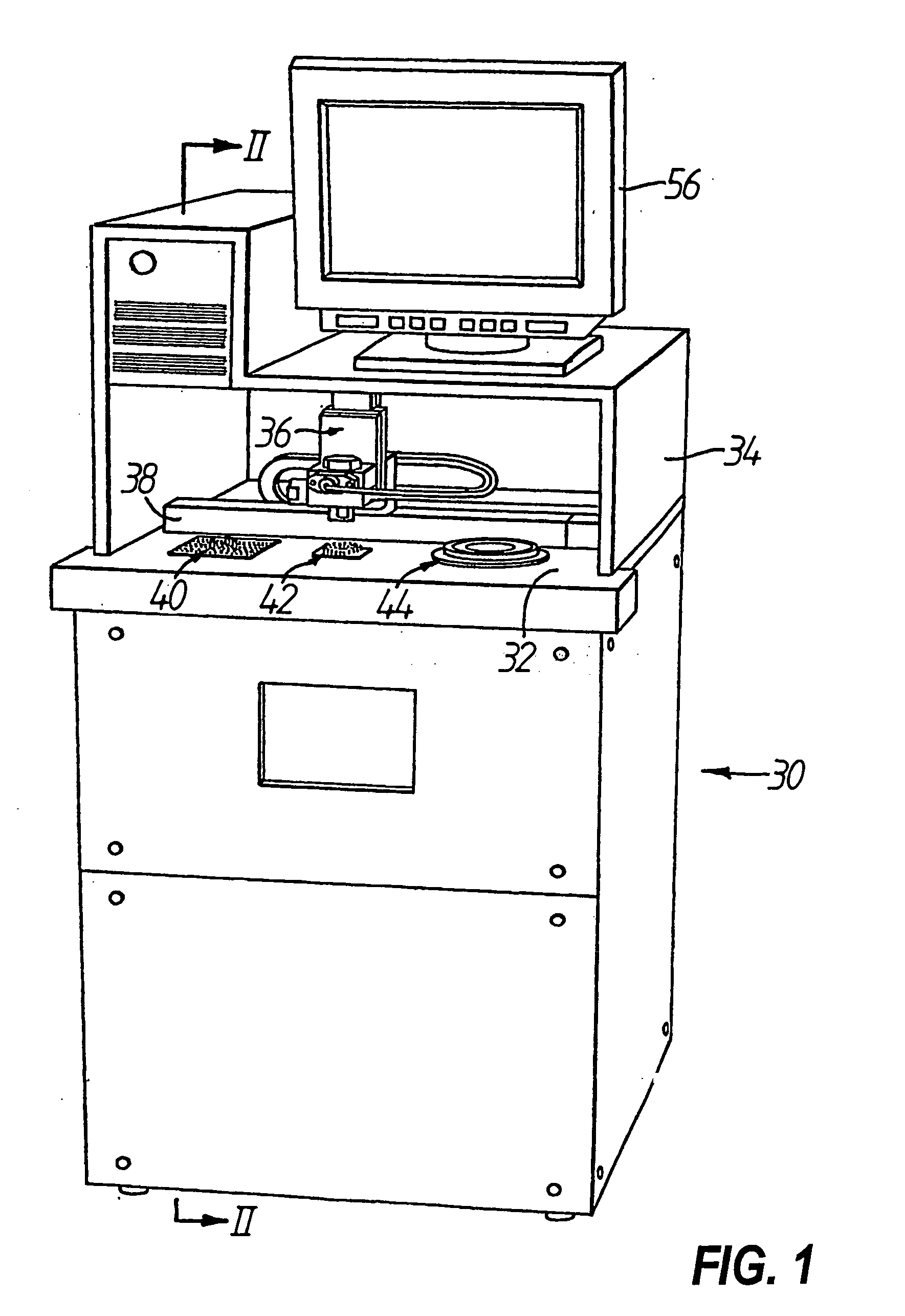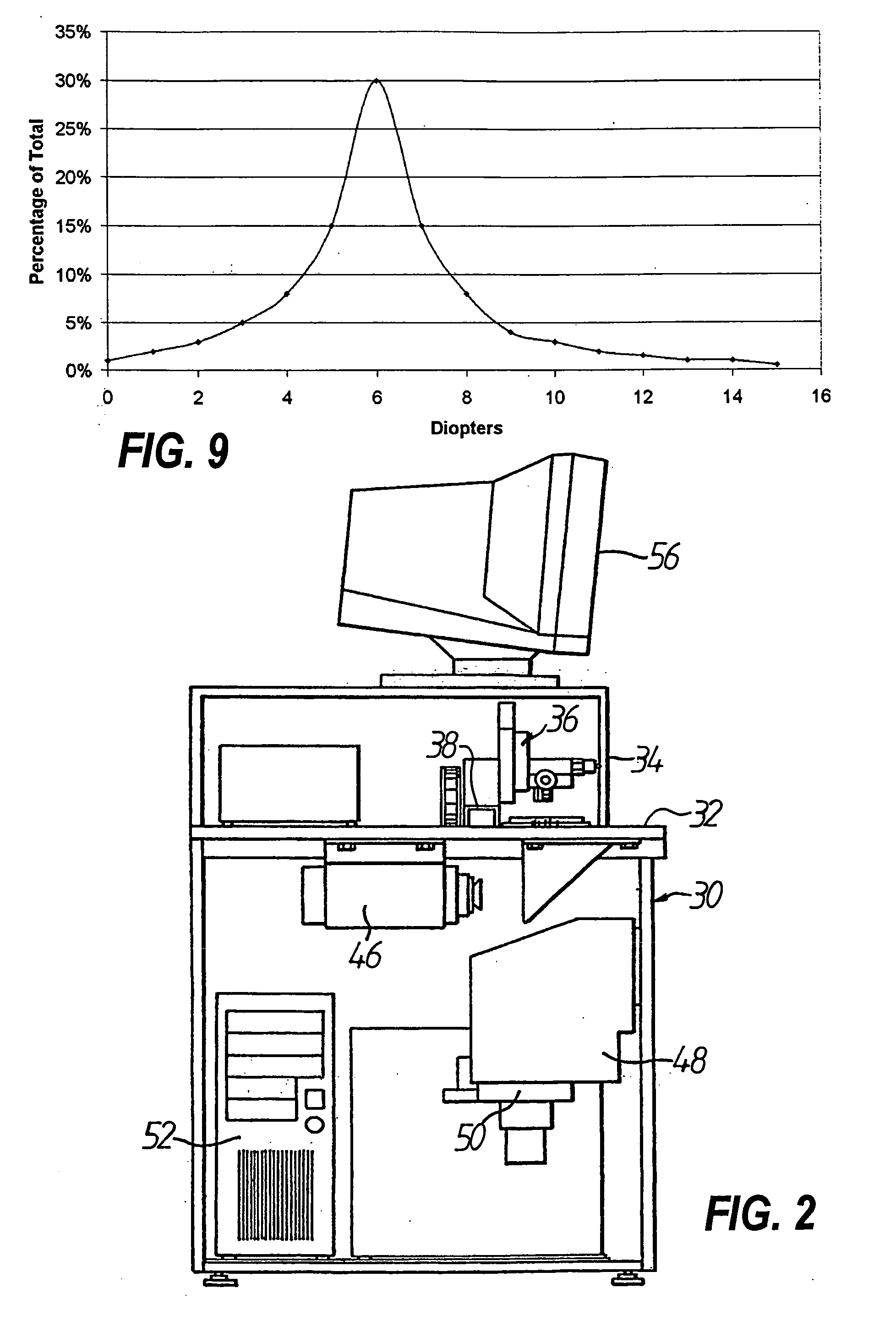Method for Blocking a Lens Blank, Adhesive Composition and Use of the Latter in Lens Blocking
- Summary
- Abstract
- Description
- Claims
- Application Information
AI Technical Summary
Benefits of technology
Problems solved by technology
Method used
Image
Examples
example 1
[0113]A mixture of 60% by weight Solvay “Polycaprolactone C6500” with a particle size of 3 mm, and 40% by weight “General #3” UV curable blocking compound (PL110284-02, MFG. DATE: Jan. 23, 2006-01) containing acrylate resins, monomers and photoinitiators, and sold by MotionFab (609891 NB Ltd.) of Moncton, New Brunswick, Canada was tested. (The General #3 blocking compound was formerly known as “ULTRAGRIP®” sold by Micro Optics Design Corporation of Moncton, New Brunswick, Canada). As in the following examples the individual components of the adhesive composition, i.e. the liquid UV curable adhesive and the solid filler particles were mixed thoroughly by hand.
[0114]The mixed product cured successfully due to the fact that the “white” C6500 particles transmitted enough of the photo active wavelengths to obtain complete curing after 10 seconds of exposure time using a “Fusion” UV lamp (which can be obtained from Fusion UV Systems, Inc. 910 Clopper Road Gaithersburg, Maryland 20878-1357...
example 2
[0118]A mixture of “Elvacite® 2550” (Methyl / n-Butyl methacrylate copolymer) obtained from Lucite International Specialty Polymers Ltd. and General #3 was prepared at a ratio of 60% by weight Elvacite® 2550 to 40% by weight UV compound, i.e. General #3. This increased the overall hardness of the cured adhesive composition to 40.4 Shore D, and resulted to a much lower variance in hardness.
[0119]The particular sample of Elvacite® 2550 used had generally spherical or ellipsoidal particles of irregular diameters ranging from 15 to 460 microns, with an average particle size of 350 microns.
[0120]The low Tg (36° C.) and relatively low hardness of 28 Shore D of the cured mixture at 50° C. deblocking temperature gave a good combination of stiffness at processing (surfacing) temperatures and high flexibility at deblocking temperatures. The 350 micron particle size was also seen to be a benefit for providing uniform shrinkage and support in addition to minimum gaps of less than 0.5 mm being pos...
example 3
[0121]A third compound was prepared using ExxonMobil “Escor AT320 EMA-AA Terpolymer”. The 60% by weight of Escor AT320 filler to 40% by weight of General #3 was again used.
[0122]The particle geometry of this filler was irregular, and the particle size was such that it passed through a 1.5 mm screen.
[0123]This adhesive composition is seen to be an advantageous material from the thermal properties perspective, and was tested for support at a surface processing temperature of 23° C. and deblocking temperature between 55° C. and 60° C. Hardness reduced on a slope of 0.4 Shore D per ° C., but started at a relatively low 25 Shore D hardness at 25° C. This hardness is lower than the General #3 hardness of 38 Shore D so it is felt that other products from this filler material family may provide better stiffness at surface processing temperatures between 20 and 25° C.
PUM
| Property | Measurement | Unit |
|---|---|---|
| Percent by mass | aaaaa | aaaaa |
| Angle | aaaaa | aaaaa |
| Particle size | aaaaa | aaaaa |
Abstract
Description
Claims
Application Information
 Login to View More
Login to View More - R&D
- Intellectual Property
- Life Sciences
- Materials
- Tech Scout
- Unparalleled Data Quality
- Higher Quality Content
- 60% Fewer Hallucinations
Browse by: Latest US Patents, China's latest patents, Technical Efficacy Thesaurus, Application Domain, Technology Topic, Popular Technical Reports.
© 2025 PatSnap. All rights reserved.Legal|Privacy policy|Modern Slavery Act Transparency Statement|Sitemap|About US| Contact US: help@patsnap.com



